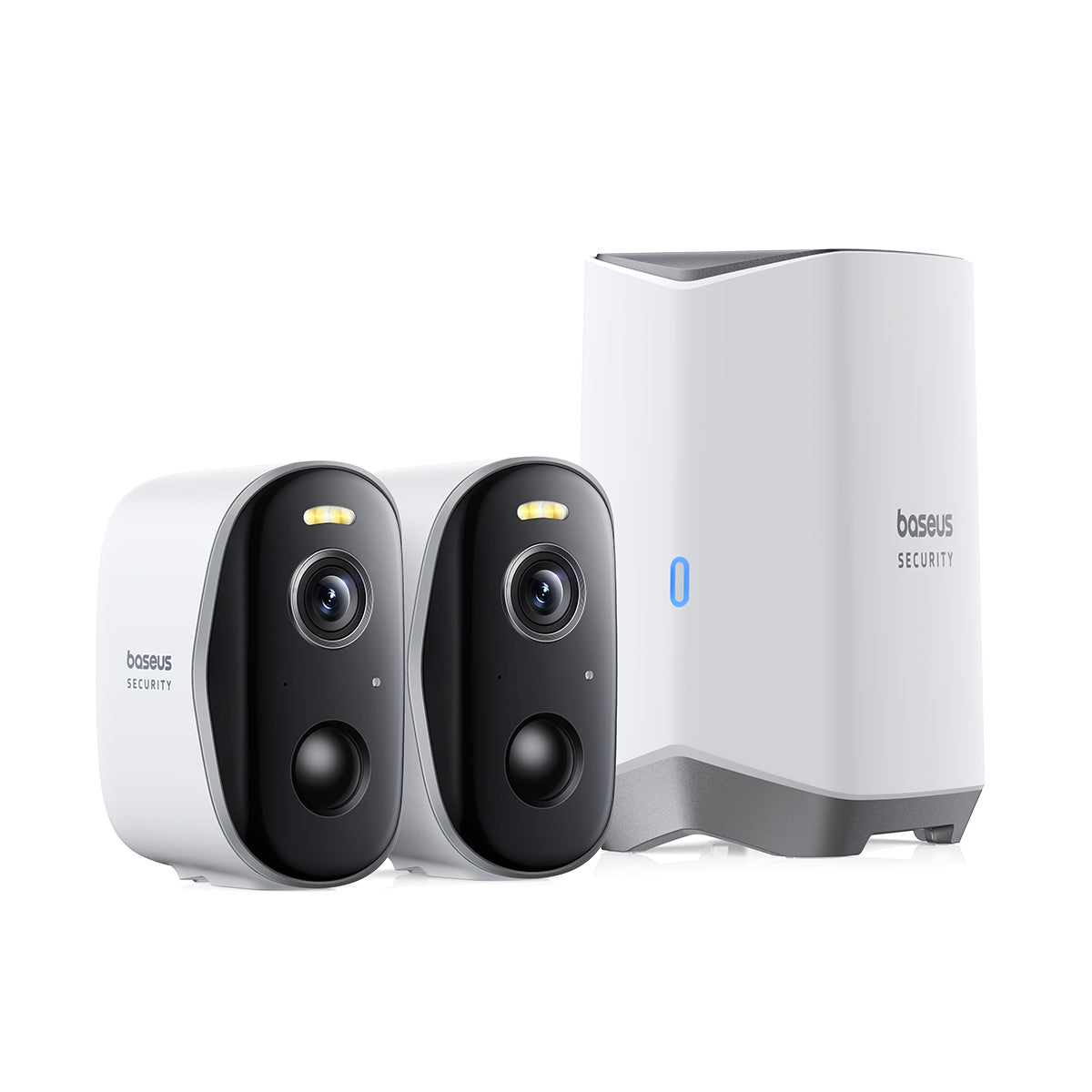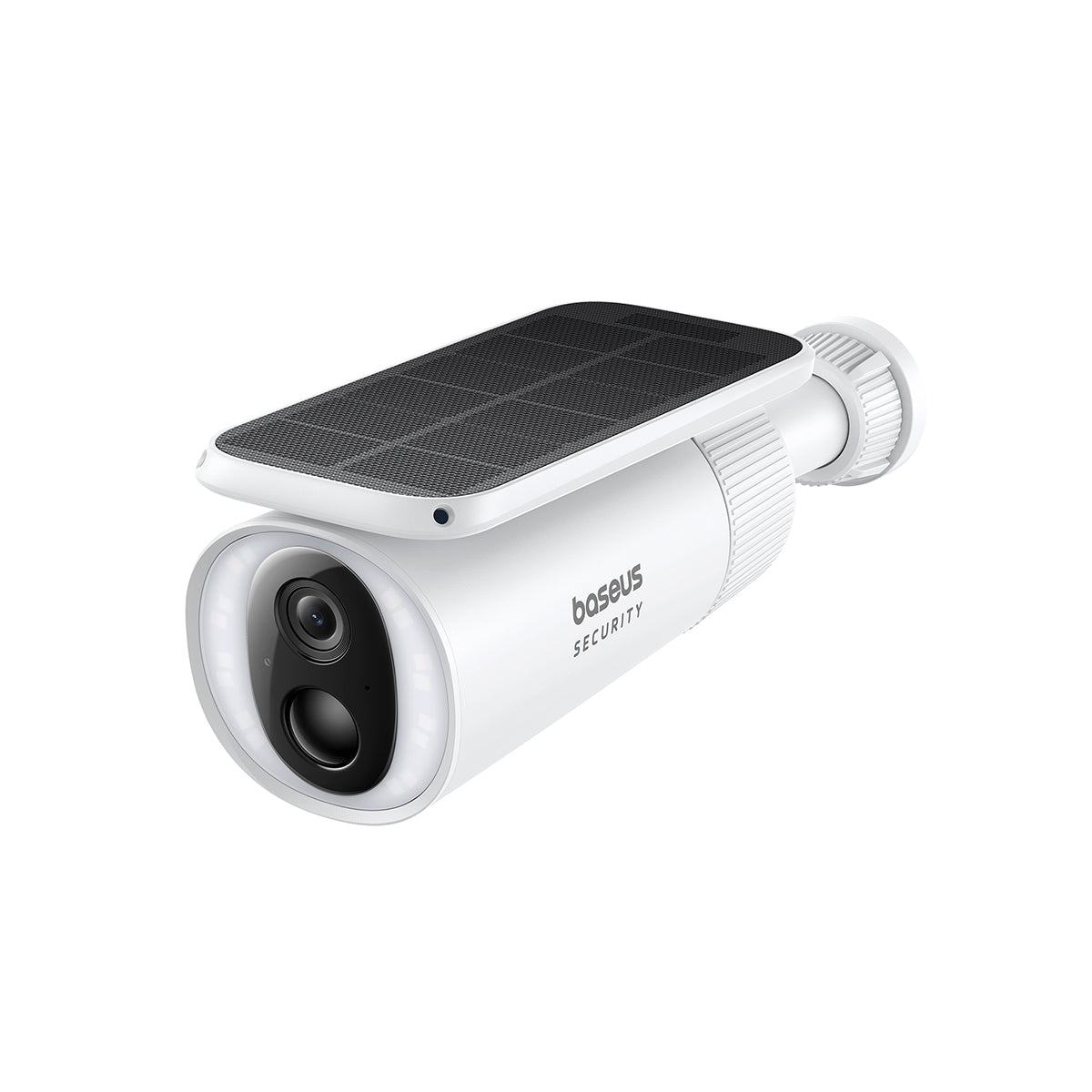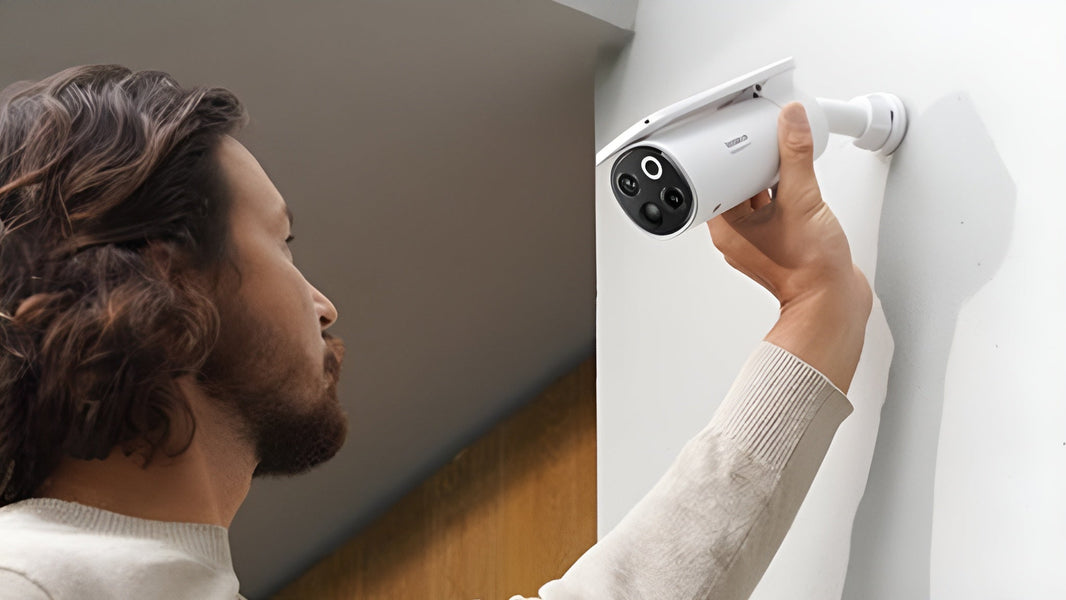Let's talk about the biggest flaw in home security. It is the blind spot. It is that sliver of your yard the camera just cannot see. It is the frustration of having to choose between a wide angle view where everyone is a blurry shape, or a zoomed in view that misses everything happening just out of frame.
A traditional single lens camera forces you to compromise. It can only look in one direction at a time. If it's a PTZ (Pan Tilt Zoom) camera, it might follow a person across the driveway, but what is it missing? It is completely blind to the person walking up your front path.
This is the problem that new technology has finally solved. The solution is not just one camera, but two in a single body. The dual-lens security camera is here, and it is changing the game.
The Problem: The Single Lens Compromise
A single lens camera, by its very nature, has a fixed field of view. You are forced to make a choice.
Do you set it to a wide angle? Great, you can see your whole yard. But good luck identifying a face or a license plate. Everything is pixelated and tiny. This is the failure of 1080p.
Do you zoom it in? Perfect, you can see a crystal clear view of your porch. But you are completely blind to your driveway, your gate, or the side of your house.
This is the security blind spot. And it is where a 3K security camera with two lenses completely outshines its predecessors.
How a Dual-Lens Security Camera Works
A dual-lens outdoor camera is not just two cameras slapped together. It is an intelligent system where two lenses work in concert. They use a few different methods to eliminate blind spots for good.
1. The "Wide and Telephoto" Method
This is the most common and powerful approach. One lens is a wide angle lens, giving you the "big picture" overview of your entire property. The second lens is a telephoto lens, which is permanently zoomed in on a critical area, like your front door or driveway.
On your app, you see both views at the same time. You never have to choose. You can watch the kids playing in the yard on the wide view, while simultaneously seeing a crystal clear, detailed shot of the mail carrier dropping off a package.
2. The Panoramic Stitch
Some dual-lens security camera models point their lenses in different directions and use advanced software to "stitch" the two video feeds together. This creates one massive, seamless security camera 180° panoramic view.
This is the literal definition of eliminating blind spots. You get a complete, wall to wall view of your property with no gaps. Of course, this technology relies on expert placement. As tech guides from CNET explain, even the best camera can be defeated by placing it in the wrong spot, which is why a wider, smarter view is so important.
3. The "Tracker" Method
This is the most advanced solution and a key differentiator in the dual lens camera vs ptz debate. This system pairs a fixed lens with a second, motorized PTZ lens.
This is precisely how the Baseus X1 Pro security camera operates. It uses its dual-lens security camera system to provide two clear views.
-
The fixed lens (a 3K security camera) keeps a constant watch on the main area.
-
The second PTZ lens uses AI to lock onto a moving object (a person or car) and track it as it moves.
This solves the original problem perfectly. The camera can follow a suspicious person all the way down your driveway, while the fixed lens never stops watching your front porch. You get both the overview and the detailed tracking, all at once.
Why 3K Resolution is the New "Sweet Spot"
For years, 1080p was the standard. The problem, as we have discussed, is a lack of detail. 4K was the proposed answer, but it comes with its own massive problems: it eats up your internet bandwidth and requires enormous amounts of storage space.
This is why 3K resolution (often around 5 megapixels) has become the new gold standard.
A 3K security camera delivers a massive jump in clarity over 1080p. You can digitally zoom in on a 3K image and still see a face clearly. You can make out the license plate on a car in your driveway.
But it does this without the extreme file sizes and bandwidth demands of 4K. It is the perfect balance of detail and efficiency. When you combine this into a dual 3K security camera system, you are getting two streams of crystal clear video that are actually usable as evidence, not just as a vague alert.
Don't Forget the Spotlight: Seeing in Color
The final piece of the puzzle is night vision. Traditional infrared (IR) night vision gives you a grainy, black and white image. You can see that someone is there, but you cannot tell what color car they are driving or what color clothing they are wearing.
A spotlight security camera solves this. It is a camera with a built in, motion activated LED floodlight.
So, what is color night vision? It is exactly what it sounds like. When the camera detects a person, the bright spotlight blasts on. This does two things:
-
It startles the intruder, often scaring them away.
-
It floods the area with light, allowing the camera to record in full, vivid color.
Now, your 3K security camera can capture all the critical details, day or night. You can give the police a description of a person in a red jacket and blue jeans, not just a "grey blob."
See the Whole Picture
A single lens camera is a compromise. A dual-lens security camera is a solution.
When you combine the total awareness of two lenses with the sharp, identifiable detail of 3K resolution, you get a system that truly sees what others cannot. You eliminate the "what if" scenarios. You cover the gaps. You finally get a complete, high definition view of your property.
Stop choosing between the wide view and the zoom view. It is time to have both.
Ready to eliminate your blind spots for good? Explore our full collection of cutting edge security solutions and find the camera that gives you the complete picture.
Explore Our Best Selling Security Products
FAQs
What is the difference between a dual lens camera vs ptz?
A traditional PTZ (Pan Tilt Zoom) camera has only one lens that moves. When it pans left to follow someone, it is completely blind to what is happening on the right. A dual-lens security camera (like the Baseus X1 Pro) combines both: it has a fixed lens that always watches the main area, plus a second PTZ lens that can track motion. You get both the wide view and the tracked closeup at the same time, eliminating blind spots.
What is color night vision in a security camera?
This is a feature where the camera uses its built in white light, like a spotlight security camera, to illuminate the scene when motion is detected at night. This bright light allows the camera sensor to capture video in full color instead of the grainy black and white of traditional infrared. This is crucial for capturing details like clothing or car colors.
Is a 3K security camera better than 1080p?
Yes, significantly. A 3K security camera captures more than twice the detail of a 1080p camera. This means when you need to digitally zoom in on a recording, you are much more likely to see a clear face or license plate instead of a pixelated blur. It is a major upgrade in video evidence quality.











